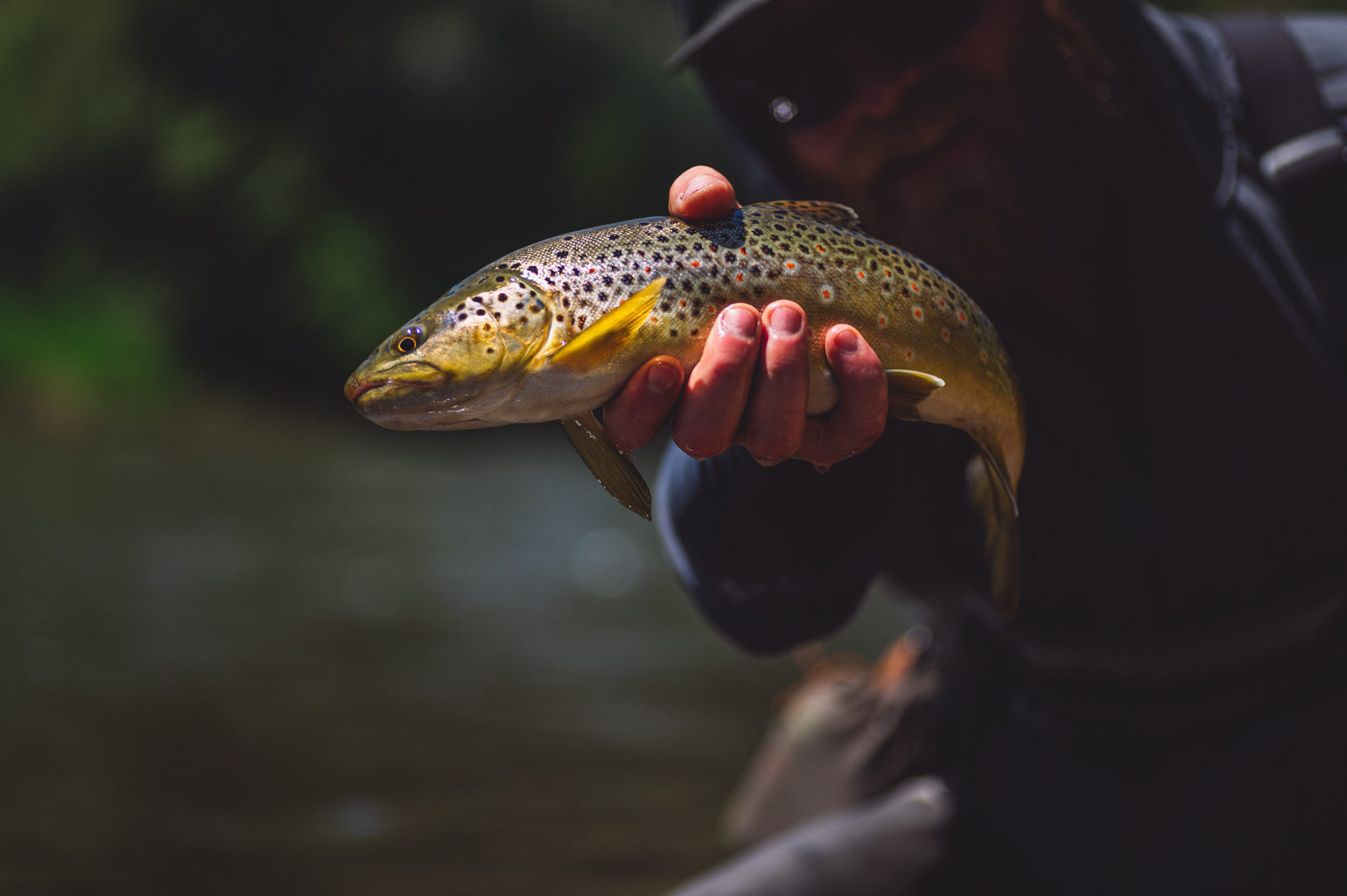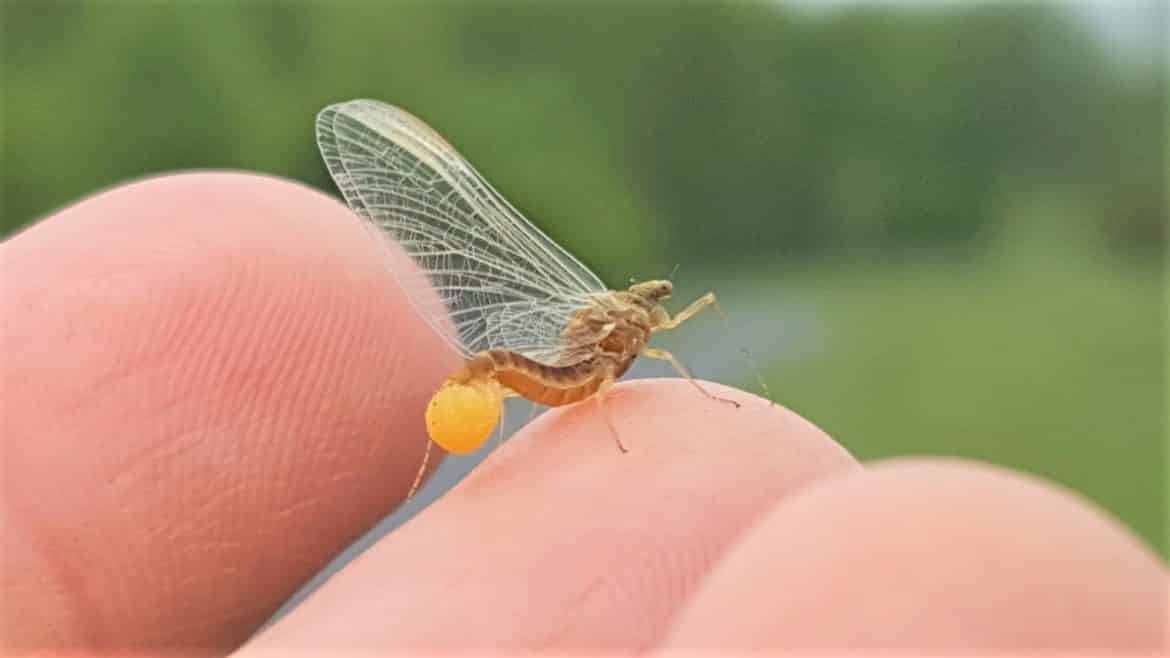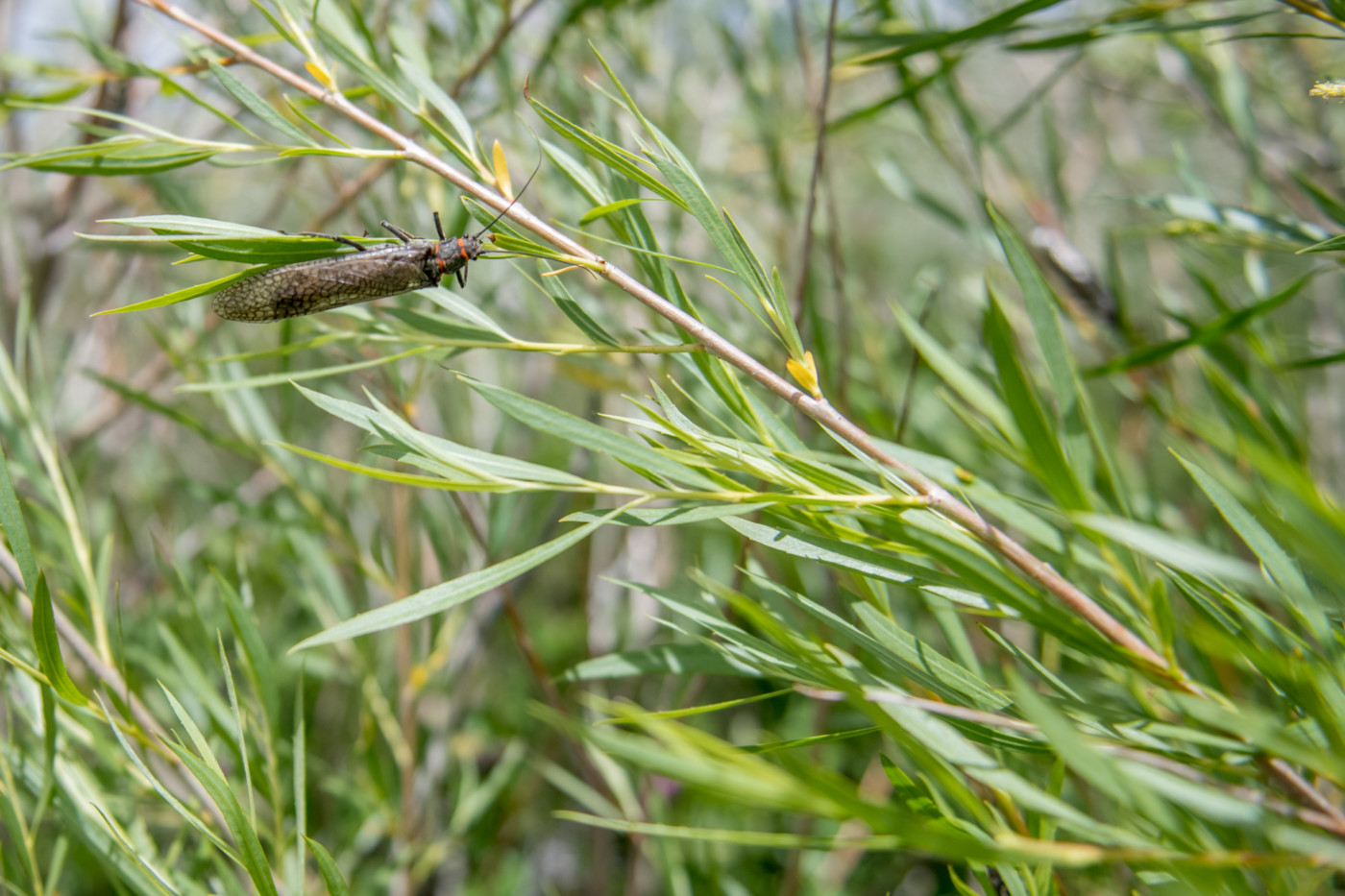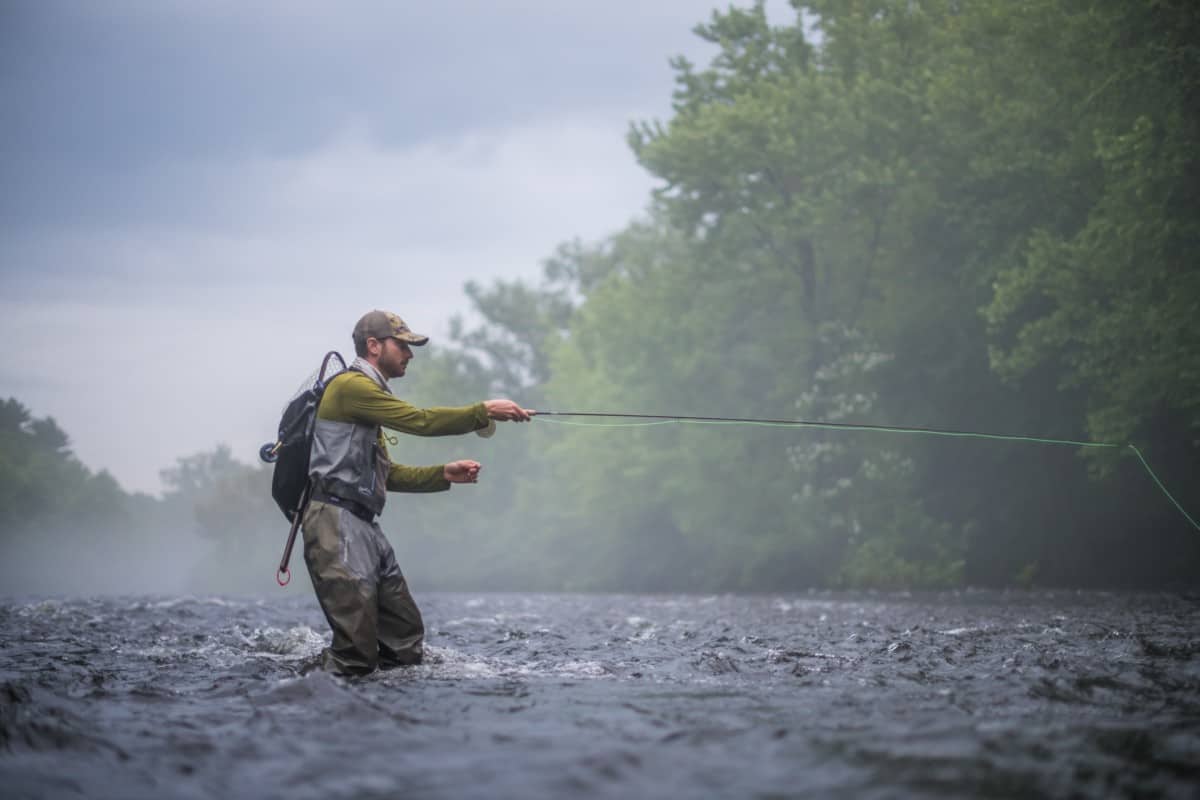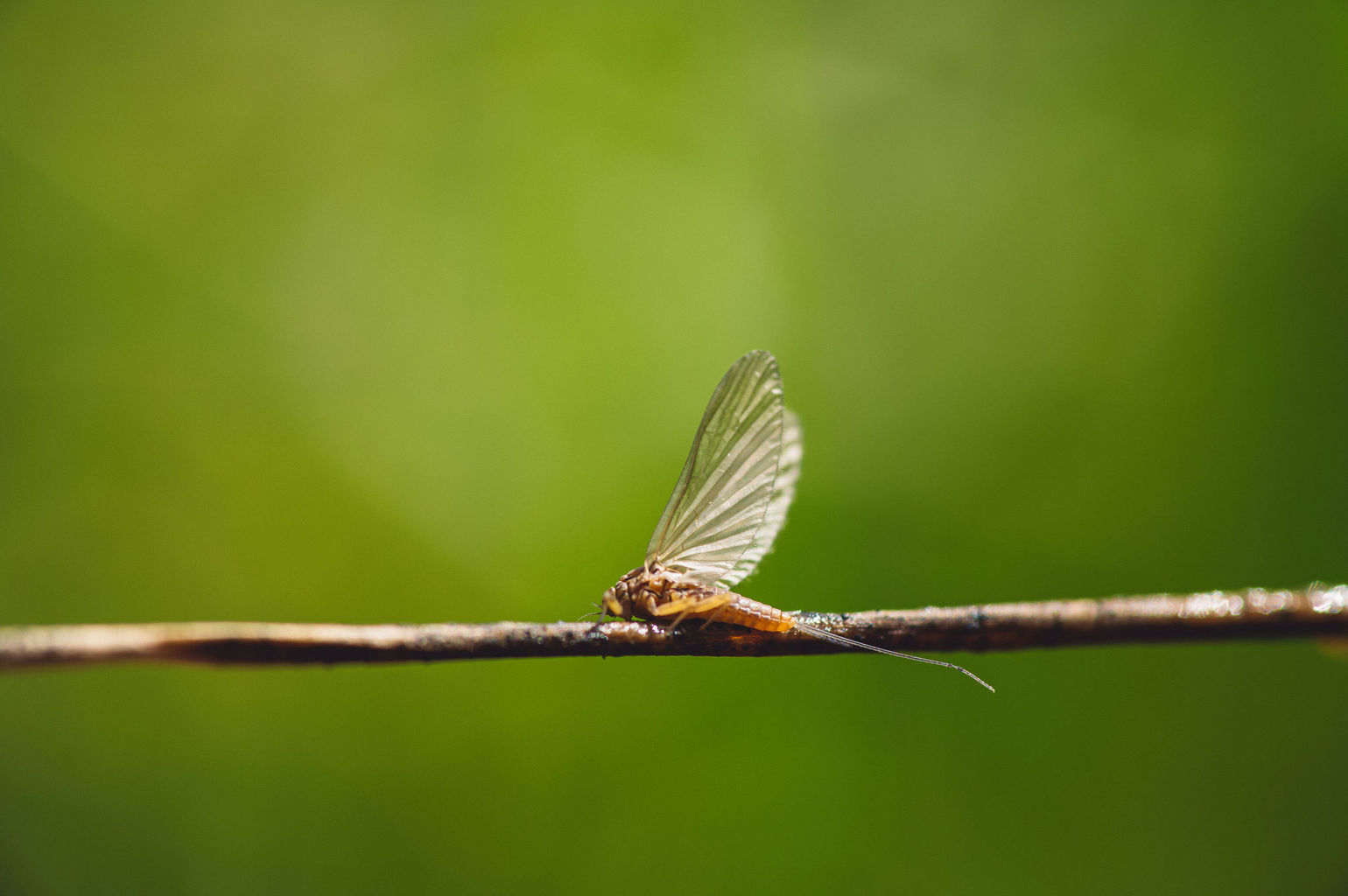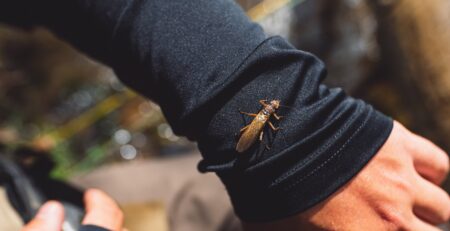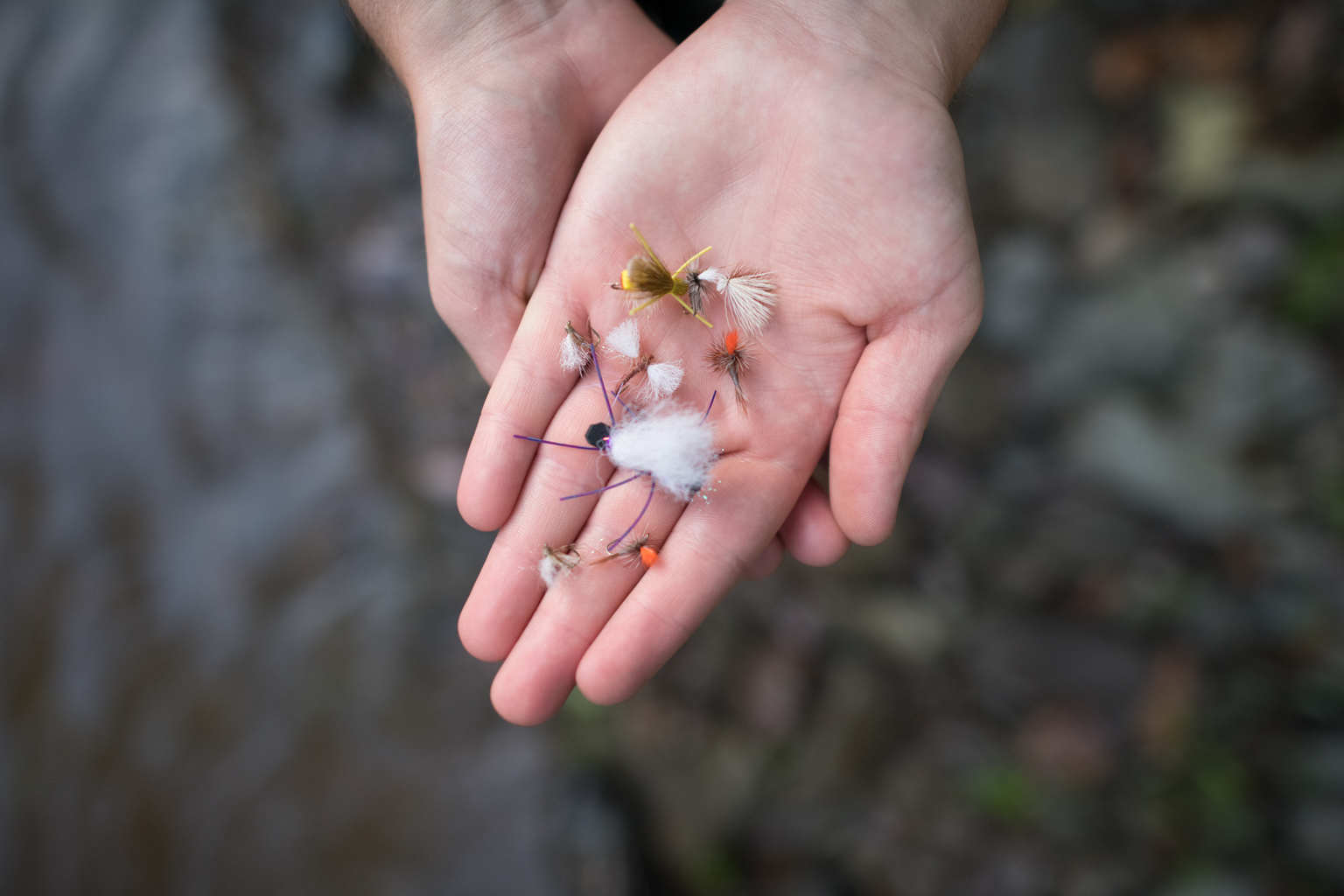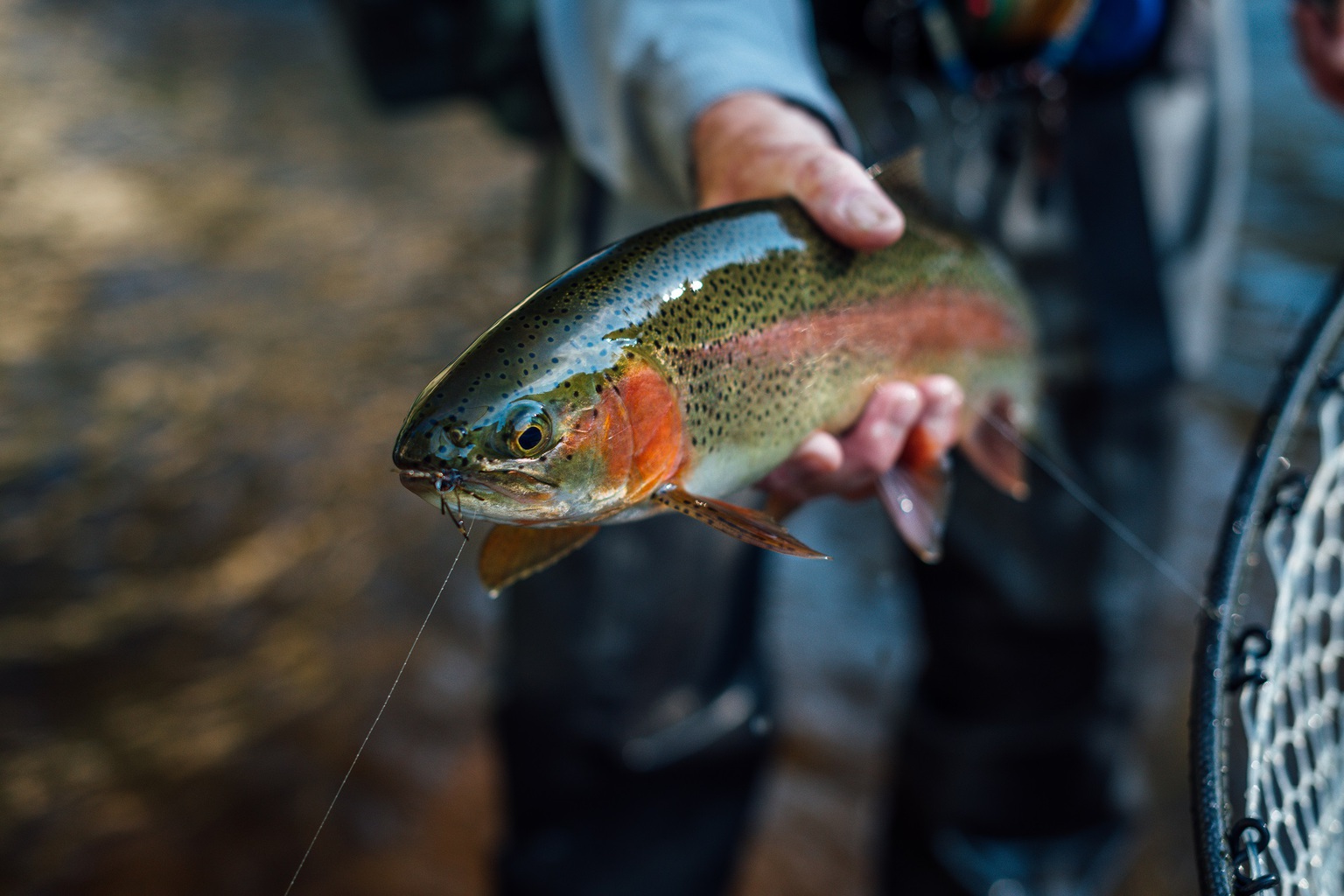Fly Fishing The October Caddis
The famed October Caddis is a nationwide gift to anglers. As deciduous trees shed their leaves, signaling the end of growing season, fly anglers should ready themselves to fish the giant tent winged caddisfly.
Beginning in September and lasting into November, depending upon your geography, the caddisfly will constitute a major portion of a trout’s diet. In the West, the “Dicosmoecus” is the scientific name for this insect. The East has its own version, “Pycnopsyche,” commonly referred to as the Great Autumn Brown Sedge.
Both species are nearly identical in appearance, life-cycle, hatch period, and behavior.
The keys to success in fishing the October Caddis are pinpointing the correct life-cycle stages and familiarizing yourself with the insect’s behavior. Without accuracy in your fly selection and presentation, you may only catch a skunk.
The October Caddis is prominent in the fall because these species time their hatch with the leaf shed.
As larvae hatch from deposited eggs, their primary food source are the fallen leaves in the water. If you want to maximize your fishing window, start using larva and pupa patterns as soon as the leaves begin dropping.

Both species of caddis are case dwellers in their larva stage. Typically, cases are made from wood fibers and small gravel bits. During late summer, the larvae leave their cases and begin pupation in faster water.
They’ll gravitate to the undersides of smooth, flat rocks where they’ll seal into a stone casing as they mature into adulthood. Once the final stage of metamorphosis is complete, they will begin their float to the surface utilizing tiny gas bubbles built up under their skin.
As they float, many will drift long distances before slowing in shallow water where they can fully hatch and crawl out of the water. Some will hatch midriver as well.
Adult emergence varies by geographic region. You may see full emergence from September to November, but what is consistent is that these insects choose a time of peak activity from late afternoon to dark.
The best way to time the emergence correctly is to fish in the evening or early hours of the morning. Unless you’re seeing a hatch so abundant that fish are locked in all day, you can save some effort by staying off the water during the middle of the day.
Pre-Hatch: Nymphs
Fish the early stages of the October Caddis life-cycle with a tandem nymph rig. Put a pupa imitation up top, and drop a larva pattern below. Dead drift your rig and see if either nymph gets more attention.
If you’re unsuccessful, try mixing up your depths in the water column – lengthen the tippet to the larva pattern, or add some split shot above the pupa imitation to sink both flies a little deeper.
Swinging your flies at the end of the drift is effective as well. Add in a few rod twitches to the swing. As the pupa come closer to adulthood they’ll be looking to break out of their casing, a little twitch here and there shows fish these insects are getting close to surfacing and flying out of reach.
Hatch: Dry Dropper
When you’ve confirmed the hatch is at its peak – pupae are emerging into full adults – ditch the nymph rig and switch to a dry dropper. Tie on an adult dry fly pattern and attach a pupa nymph off the back with about 24 inches of tippet.
You’ll be able to account for both stages doing so. The fish should have moved up in the water column at this point, but lazy trout may still be occupied with the more vulnerable pupae as they ascend the water column.
If you want a shot of adrenaline, try skating your dry on the surface. Egg laying females will twitch and flop around on the surface as they deposit eggs, if you can imitate this activity with your fly you may be in for some explosive takes.
Patterns
All of these patterns are available at theflycrate.com.
Larva – Euro Peek-A-Boo Jig Nymph, Jigged Caddis Larva, Tungsten Jig American Grannom
Pupa – Holy Grail, Baltz CDC Caddis Pupa, Newbury’s Little Caddis Pupa
Adult – Elk Hair Caddis, Neversink Caddis, October Caddis

